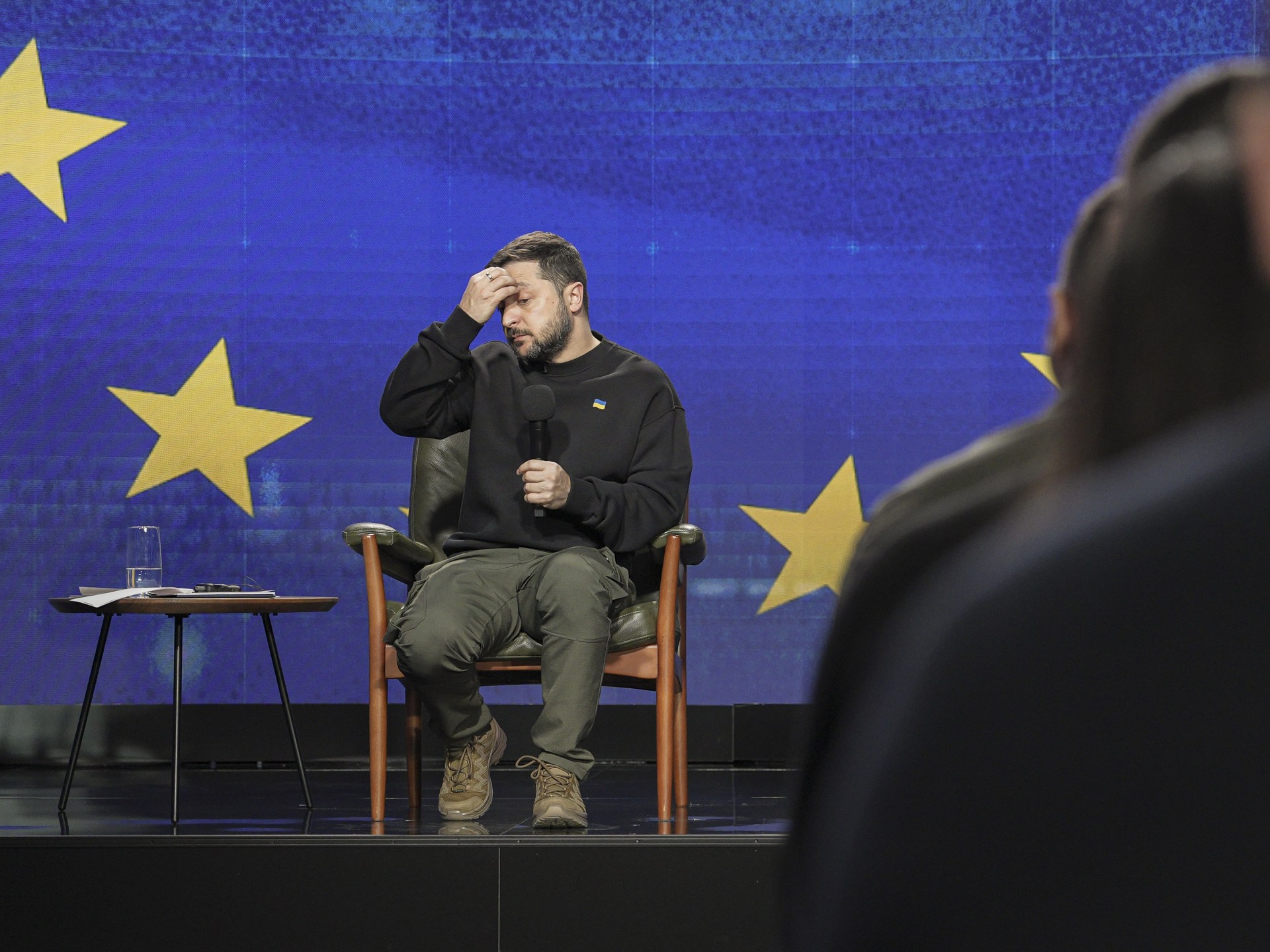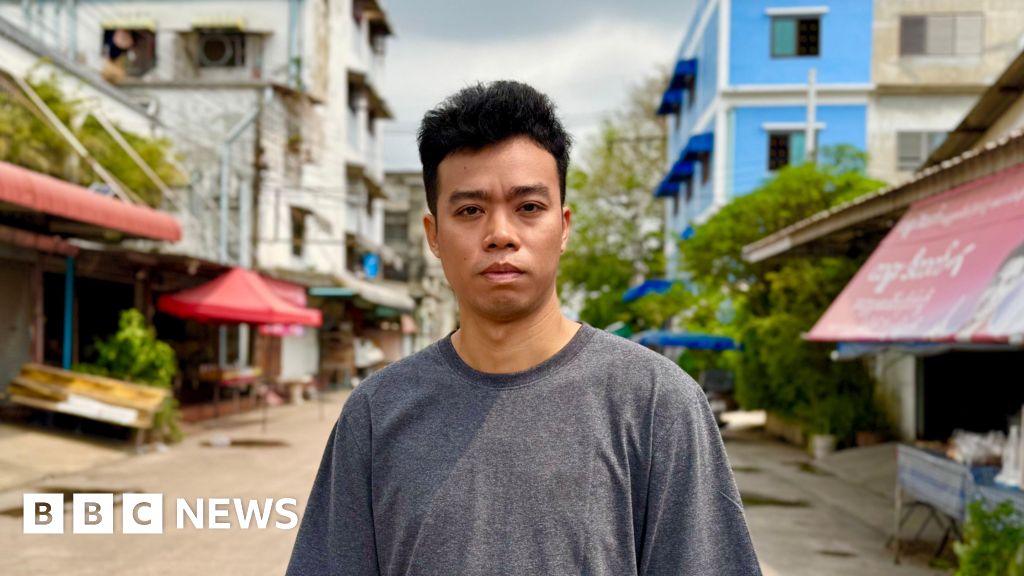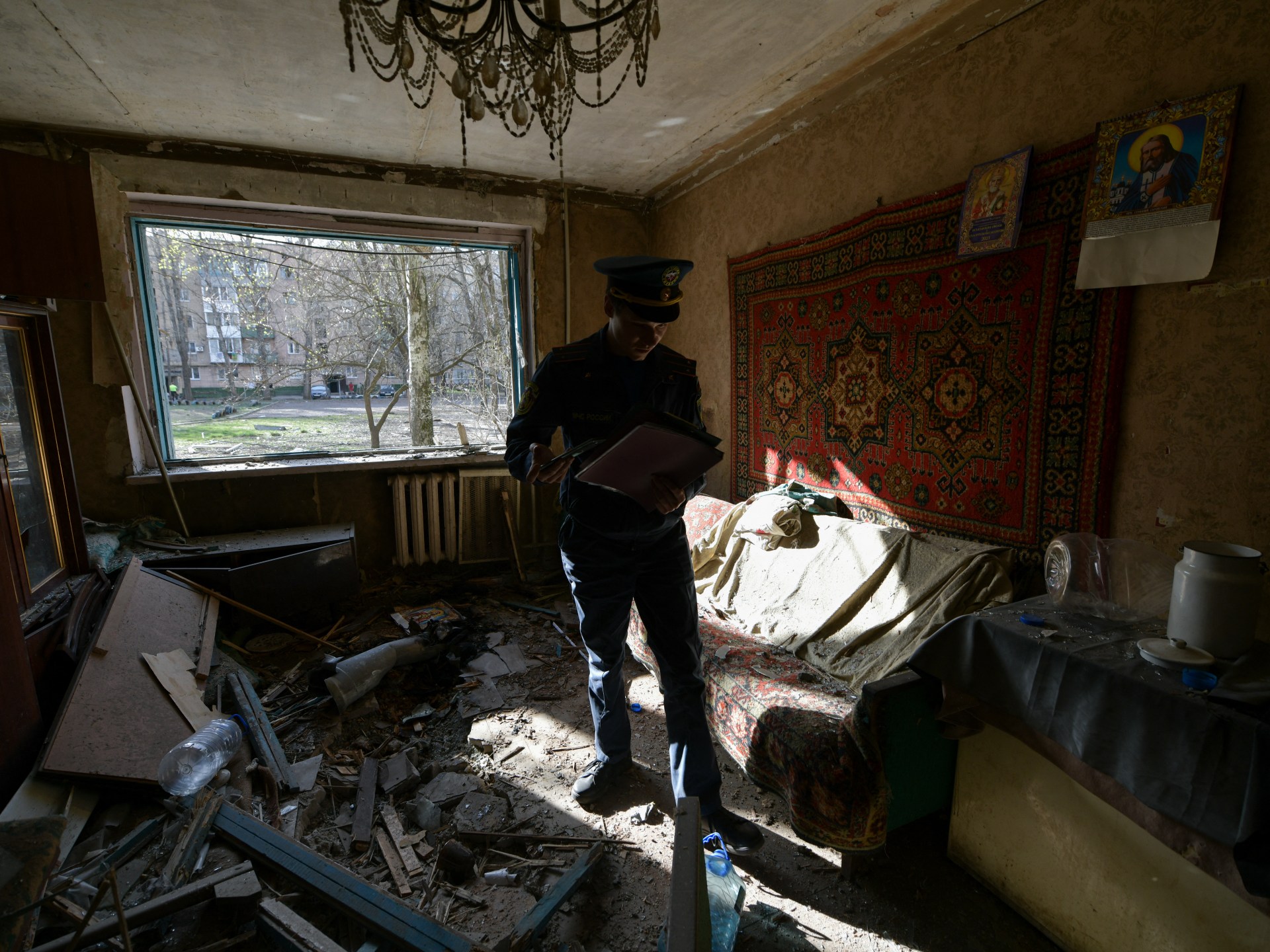Putin’s confidence upstages Zelenskyy as Ukraine faces uncertain 2024 | Russia-Ukraine war News
Russia’s Vladimir Putin has committed to spending a post-Cold War record $157bn fighting Ukraine and securing Russia next year – a 70 percent increase on this year’s defence budget.
But Ukraine’s Volodymyr Zelenskyy has failed to secure $61.4bn from the US and $76.6bn from the European Union, among his staunchest allies, riven by internal disagreements over spending.
During lengthy press conferences over the past several days about the wartime issues facing them both, the confidence exuded by Russia’s president clearly outshone the mere faith expressed by Ukraine’s.
A Ukrainian summer counteroffensive that petered out without significant territorial gains has divided allied generals, as Russian forces have in recent weeks crept forward on the eastern front, putting Ukraine back on the defensive.
“Practically, along the entire line of contact, our armed forces are, shall we say, modestly improving their position. Virtually all are in an active stage of action,” said Putin in his annual, end-of-year press conference at the International Trade Centre in Moscow on December 14, departing from his traditionally reserved assessment of the front.
Three days later, he told a meeting of his United Russia Party: “Russia will either be a sovereign, self-sufficient power, or it will not be at all,” returning to his pre-war rhetoric of “denazifying” and “demilitarising” Ukraine – code for installing a puppet regime in Kyiv and rendering Ukraine a defenceless buffer zone between Russia and NATO.
On December 19, by contrast, Zelenskyy fielded embarrassing questions on why congressional Republicans in Washington and a Russophilic Hungary in the EU have stymied the political process of military aid approval.
“I am confident that the United States will not let us down and that what we have agreed upon with the United States will be fully implemented,” he said.
“As for the [EU’s] 50 billion euros, I’m confident that a decision will be made in the very near future when they convene. It has been arranged in a way that … there are other mechanisms in place to ensure that Ukraine receives these 50 billion.”
The EU is proposing to commit 50 billion euros in financial aid to Ukraine over the next four years, as well as a separate 20 billion in military aid next year – a total of $76.6bn.
Putin’s determination was put into perspective in a report by the newspaper Bild on December 14, in which an unnamed Russian source described plans to overrun the remaining areas of the Luhansk and Donetsk regions and to capture much of Kharkiv by the end of 2024. If successful in the latter, it would roll back enormous Ukrainian counteroffensive gains in September last year.
The source described second-stage plans to take large parts of the Zaporizhia and Dnipropetrovsk regions and to advance as far as Kharkiv city by the end of 2025 and 2026.
A savage war
Far from the presidents’ decorous press conferences, a war now largely eclipsed in the media is being savagely fought with staggering loss of life.
Ukrainian marines who have taken part in operations across the Dnipro river in Kherson told the New York Times they amounted to a “suicide mission”.
They described high casualty rates and shelling so intense from Russian positions that they had been unable to recover the bodies of their comrades from the shallows of the Left Bank for two months. Nor have they been able to ferry the wounded back to base camps across the river.
“There are no positions. There is no such thing as an observation post or position,” said one soldier. “It is impossible to gain a foothold there. It’s impossible to move equipment there … It’s not even a fight for survival,” he said. “It’s a suicide mission.” Ukraine’s general staff said they would withhold comment until a later date.
Ukraine is believed to have succeeded in placing a small force of 200 to 300 soldiers on the Left Bank over the past two months.
“These difficulties are to be expected for what is an economy-of-force operation with limited positions,” said the Institute for the Study of War, a Washington-based think tank.
The Ukrainian vanguard could be setting conditions for a more secure bridgehead and a launch of operations across the Dnipro, the ISW said. Suppressing Russian artillery on the left bank would enable civilians who fled the Ukraine-controlled right bank of the Dnipro to return.
Russia, too, is suffering huge losses on this front.
On December 15, British defence intelligence reported “exceptionally heavy losses” among the newly formed Russian 104th Air Assault Division, during its inaugural operation in Kherson. The unit was sent to dislodge the Ukrainian bridgehead after marines failed to do so for two months.
Two days later, Ukraine’s armed forces said 1,250 Russian soldiers had been “liquidated” in 24 hours, a staggering number compared with normal casualty rates. With them, 25 armoured personnel carriers and 19 tanks had reportedly been destroyed.
Ukrainian authorities did not specify where these highly attritional battles had taken place, but the general staff said Russian assaults continued against Kupiansk, Lyman, Bakhmut, Avdiivka and Marinka – all on the eastern front – and Novopokrovka and Robotyne on the southern front.
Ukraine’s head of ground forces, Oleksandr Syrskyi, said Russia had lost 8,000 troops on the eastern front alone in the first half of December.
Ukraine’s high batting average
For Ukraine, there are shafts of light amid the gloom of a counteroffensive that did not deliver the expected results.
Ukraine has defended itself from a Russian drone onslaught devastatingly well.
On December 13, it was reported that Ukrainian air defences had downed all 10 Iranian Shahed drones and 10 guided missiles of unspecified types that targeted Kyiv. The following day, they shot down 41 of 42 drones launched into Ukraine as well as all 14 drones and both missiles launched the day after that.
On December 16, Ukraine shot down 30 out of 31 drones, all 20 Shahed drones launched on December 17, and 18 out of 19 drones launched on December 20. That represents a 98 percent kill rate for the week.
Russia targeted Ukrainian energy and water infrastructure last winter, in a bid to break popular will to support the war. Last week, Ukrainian Air Force spokesman Yuri Ignat said Russia now had enough drones to attack Ukraine every day from various directions – something Russia has practically been doing for much of the autumn.
Keeping the numbers up
Even if it receives all the $138bn it hopes for in military aid next year, Ukraine faces serious munitions and manpower concerns.
Zelenskyy said his military chiefs have proposed lowering the mobilisation age from 27 to 25 to put up to half a million more people in uniform next year, suggesting high attrition to the roughly million-strong force Ukraine had at the beginning of the invasion.
Putin, by contrast, said he had 617,000 troops across the front, some 200,000 more than Ukrainian military intelligence had estimated in September.
There are also problems with ammunition.
Ukrainian Brigadier General Oleksandr Tarnavskyi, who leads the forces spearheading the front’s most important counteroffensive, told Reuters at Robotyne in Zaporizhia that Ukraine was scaling back some operations because of shortages of ammunition “across the entire front line”.
“The volumes that we have today are not sufficient for us today … We’re replanning tasks that we had set for ourselves and making them smaller because we need to provide for them,” he said, without providing details.
Check out our Latest News and Follow us at Facebook
Original Source







